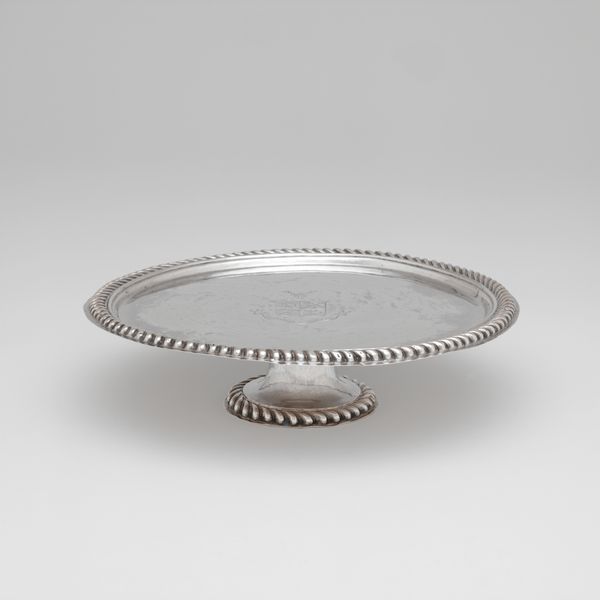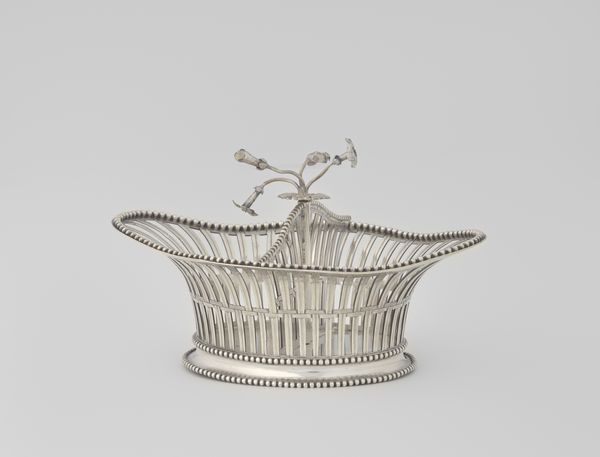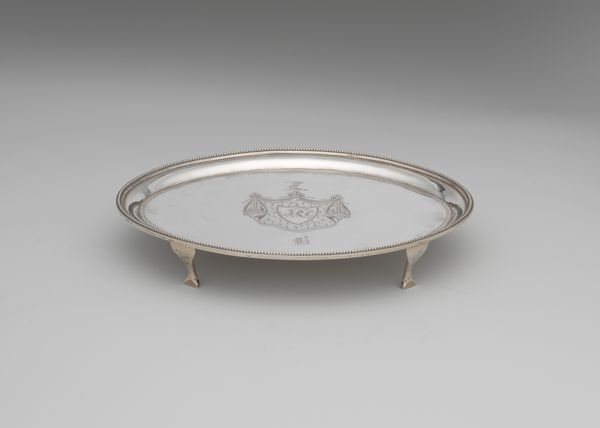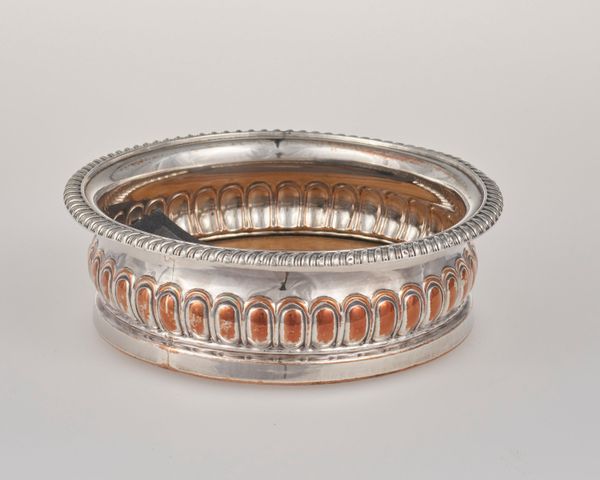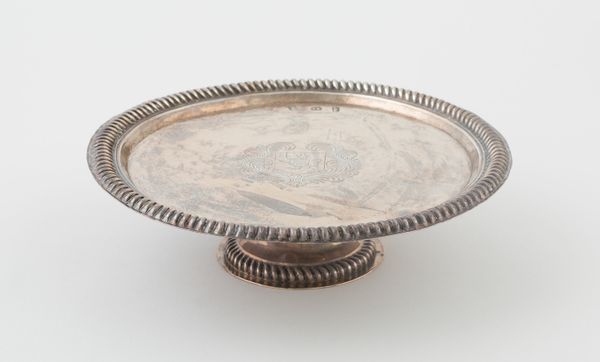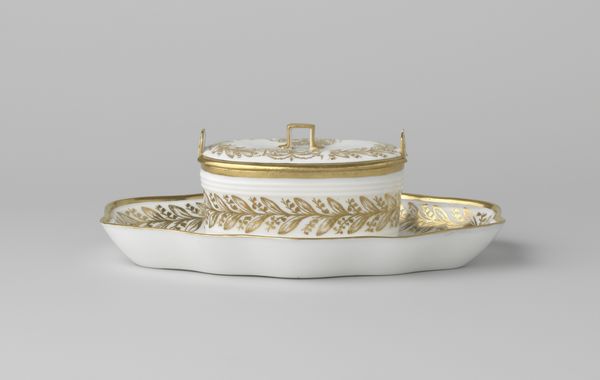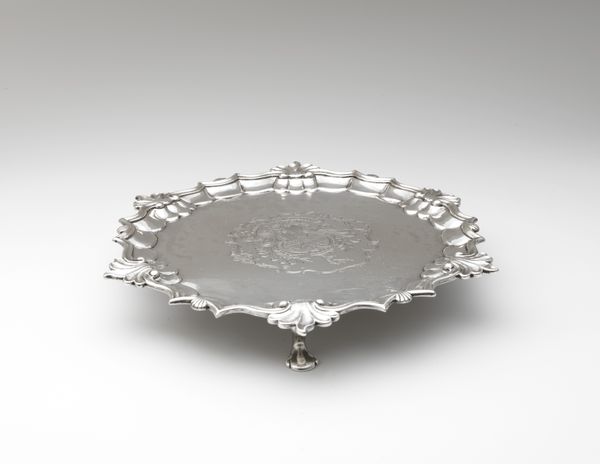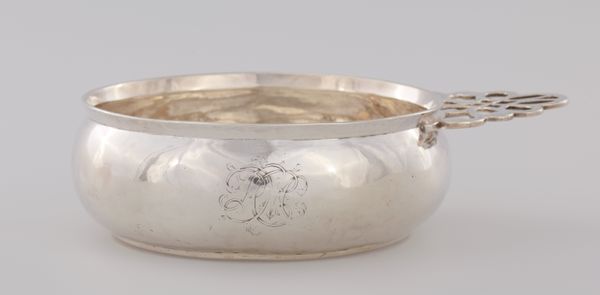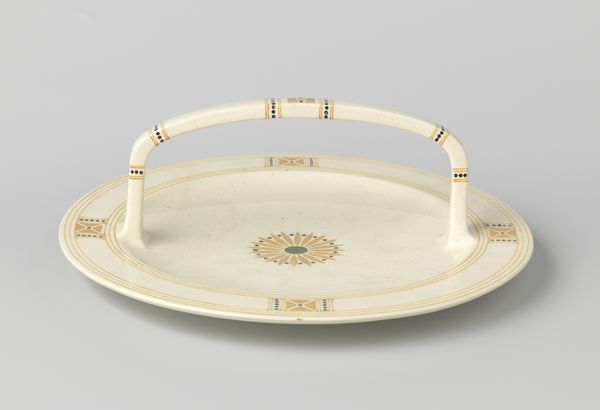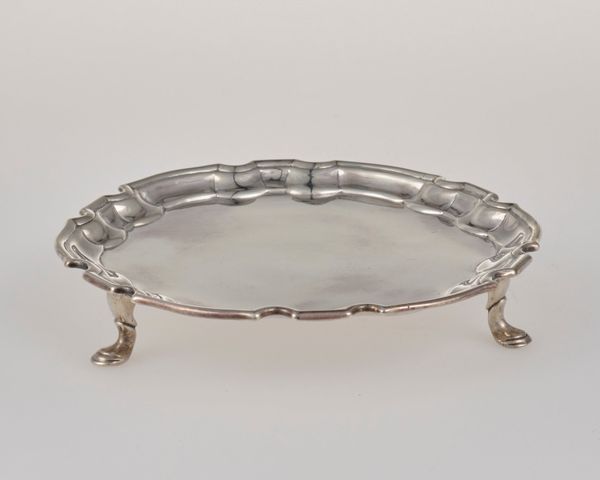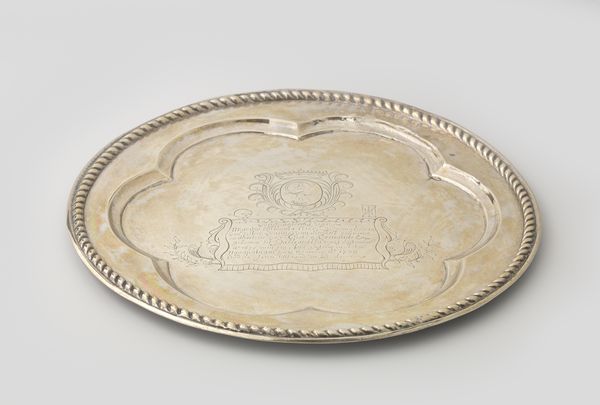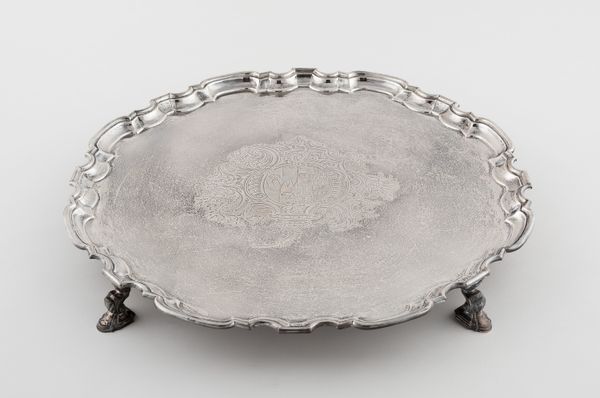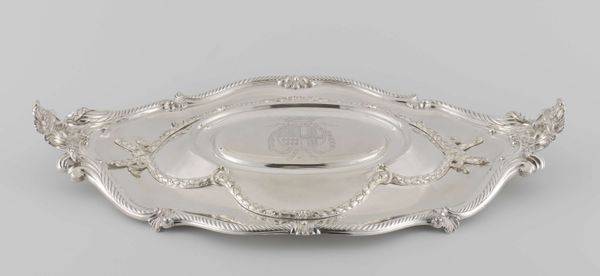
silver, metal
#
silver
#
baroque
#
metal
#
decorative-art
Dimensions: 8.3 × 27.9 cm (3 1/4 × 11 in.)
Copyright: Public Domain
Curator: What a fascinating object we have here. This "Tazza," crafted between 1697 and 1698, is attributed to Joseph Ward. Its primarily made of silver, exemplary of Baroque decorative art. What strikes you about it initially? Editor: Oh, it's so...polished! It has this restrained opulence that reminds me of whispers in grand halls. And yet, underneath that shimmering surface, it feels oddly sterile. Almost waiting, you know? Curator: That perceived sterility perhaps reflects its function and status, an object used in formal settings to elevate and display luxury goods like desserts, reflecting aristocratic consumption habits of the era. It's interesting to consider the labor involved in the piece’s creation, too. Editor: Absolutely. I can imagine the artisan meticulously shaping and polishing the silver, almost an obsessive practice to elevate everyday life. Think about the reflective surface, designed to enhance presentation. But there's this impersonal shield within its symmetry. Curator: The crest in the center, perhaps obscuring or illuminating something specific for those privileged few invited to partake. Silversmiths during the Baroque period held significant positions in society, influencing aesthetic trends and trade. Each curve and detail likely encodes messages. Editor: Hidden language for those in the know. And look at how the light dances along those repeating ridged lines around the rim, this almost dizzying feeling of swirling silver, it would be really striking under candlelight! What secrets do you think it holds about 17th-century dining culture? Curator: One could reasonably suggest that beyond surface admiration, it's not only an art form, it also reveals consumption’s ties to labor—that each object becomes this cultural mirror. Food was, and still remains, an immediate signal of access. This tazza sits right there amidst material aspiration and function. Editor: Precisely! More than merely practical, it exists, pristine on display, representing a time encapsulated by how wealth chooses to perform. It almost feels like an era of stories pressed in precious metal, so still now. Curator: In observing the work through that looking glass of material, consumption, and making, "Tazza’s" role extends beyond adornment—it embodies labor value, class aspirations, and material culture histories during the late Baroque period. Editor: Well put. For me, its almost melancholy; a captured gleam that reflects ambition but, on deeper inspection, whispers stories both beautiful and fraught from ages far away.
Comments
No comments
Be the first to comment and join the conversation on the ultimate creative platform.
